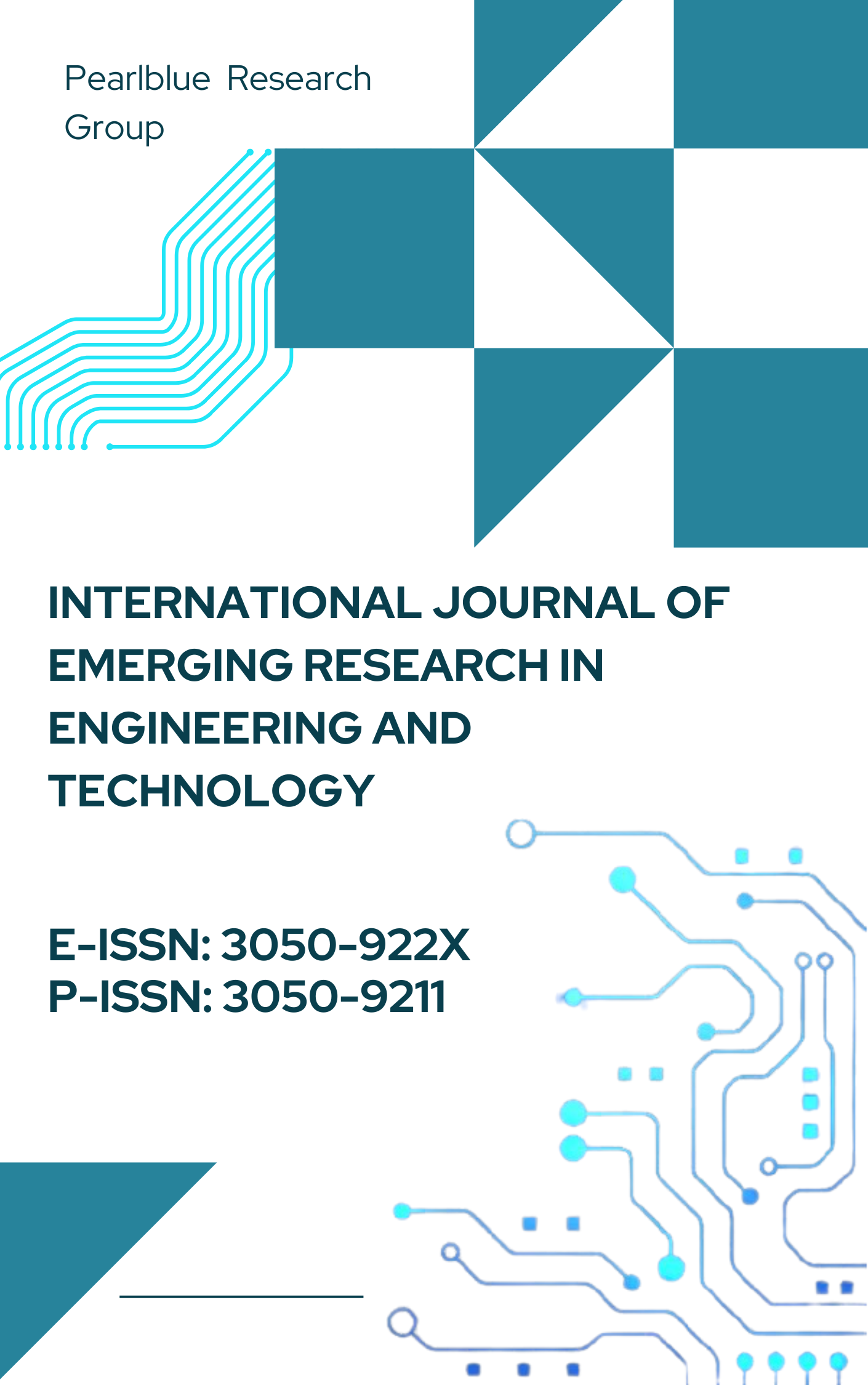Optimizing Bandwidth Usage in Real-Time Streaming Applications
DOI:
https://doi.org/10.63282/3050-922X.IJERET-V4I3P105Keywords:
Edge computing, real-time streaming, bandwidth optimization, adaptive bitrate, hybrid codec, deep reinforcement learning, Edge cachingAbstract
Applications that require real-time processing of data, like video surveillance, self-driven vehicles, and remote diagnostics, are on the rise, and most of them require a massive amount of bandwidth to perform the required tasks at the edge of the network. Most conventional video transfer methods are ineffective in environments where latency, limited bandwidth, and low or high analysis accuracy are required. This paper focuses on an adaptive bandwidth optimization framework called BiSwift that focuses on edge-based real-time streaming. BiSwift uses both low-rate encodings for the base content and HD key-frames selectively inserted at regular intervals and applies a hierarchical access and allocation scheme. By employing deep reinforcement learning or DRL, the system estimates the availability of the bandwidth. It allocates the resources henceforth used depending on the criticality of the stream, load on the server, and latency. Based on the experimental results conducted on a multi-node edge testbed, BiSwift achieves up to 52% reduction in the bandwidth utilization, up to sub-200 ms of overall end-to-end latency, and up to 21% improvement of the inference accuracy over WebRTC and DASH, the conventional approaches.
Additionally, it establishes that BiSwift has excellent scalability and practically does not differ in fairness when the system is processing many videos simultaneously. The proposed methodology demonstrates that edge-streaming systems can provide a quality experience with limited capabilities. This is a foundation for future explorations in real-time edge analytics and content delivery
References
[1] Kim, M., & Chung, K. (2022). Reinforcement learning-based adaptive streaming scheme with edge computing assistance. Sensors, 22(6), 2171.
[2] Taherizadeh, S., Taylor, I., Jones, A., Zhao, Z., & Stankovski, V. (2017). A network edge monitoring approach for real-time data streaming applications. In Economics of Grids, Clouds, Systems, and Services: 13th International Conference, GECON 2016, Athens, Greece, September 20-22, 2016, Revised Selected Papers 13 (pp. 293-303). Springer International Publishing.
[3] Edge Computing Use Cases: Empowering Real-Time Data Processing and Analysis, Suse, 2023. online. https://www.suse.com/c/edge-computing-empowering-real-time-data-processing-and-analysis/
[4] Wong, E. S., Wahab, N. H. A., Saeed, F., & Alharbi, N. (2022). 360-degree video bandwidth reduction: Technique and approaches comprehensive review. Applied Sciences, 12(15), 7581.
[5] Gazdar, A., Hidri, L., Ben Youssef, B., & Kefi, M. (2021). Minimizing the In-Cloud Bandwidth for On-Demand Reactive and Proactive Streaming Applications. Applied Sciences, 11(23), 11267.
[6] Ensuring Business Continuity During Peak Times: 6 Recommendations to Optimize Streaming and Download Bandwidth Usage, Security Boulevard, online. https://securityboulevard.com/2020/04/ensuring-business-continuity-during-peak-times-6-recommendations-to-optimize-streaming-and-download-bandwidth-usage/
[7] Surianarayanan, C., Lawrence, J. J., Chelliah, P. R., Prakash, E., & Hewage, C. (2023). A survey on optimization techniques for edge artificial intelligence (AI). Sensors, 23(3), 1279.
[8] Liu, H., Chen, Q., & Liu, P. (2023). An optimization method of large-scale video stream concurrent transmission for edge computing. Mathematics, 11(12), 2622.
[9] Kim, M., & Chung, K. (2023). HTTP adaptive streaming scheme based on reinforcement learning with edge computing assistance. Journal of Network and Computer Applications, 213, 103604.
[10] Xiong, G., Qin, X., Li, B., Singh, R., & Li, J. (2022, October). Index-aware reinforcement learning for adaptive video streaming at the wireless edge. In Proceedings of the Twenty-Third International Symposium on Theory, Algorithmic Foundations, and Protocol Design for Mobile Networks and Mobile Computing (pp. 81-90).
[11] Ravindran, A. A. (2023). Internet-of-Things Edge Computing Systems for Streaming Video Analytics: Trails Behind and the Paths Ahead. IoT, 4(4), 486-513.
[12] Jamil, H., Rodrigues, E., Goldverg, J., & Kosar, T. (2022). A Reinforcement Learning Approach to Optimize Available Network Bandwidth Utilization. arXiv preprint arXiv:2211.11949.
[13] Selvi, E., Buehrer, R. M., Martone, A., & Sherbondy, K. (2020). Reinforcement learning for adaptable bandwidth tracking radars. IEEE Transactions on Aerospace and Electronic Systems, 56(5), 3904-3921.
[14] Van Rompaey, K., Verkest, D., Bolsens, I., & De Man, H. (1996, September). CoWare-A design environment for heterogeneous hardware/software systems. In Proceedings EURO-DAC'96. European Design Automation Conference with EURO-VHDL'96 and Exhibition (pp. 252-257). IEEE.
[15] Veiga, A. L., Mayosky, M. A., & Martínez, N. (2000). A hardware/software environment for real-time data acquisition and control. IEEE Transactions on Nuclear Science, 47(2), 132-135.
[16] Suzuki, M., Hazeyama, H., Miyamoto, D., Miwa, S., & Kadobayashi, Y. (2009). Expediting experiments across testbeds with AnyBed: a testbed-independent topology configuration system and its toolset. IEICE TRANSACTIONS on Information and Systems, 92(10), 1877-1887.
[17] Ma, X., Li, Q., Jiang, Y., Muntean, G. M., & Zou, L. (2022). Learning-based joint QoE optimization for adaptive video streaming based on smart edge. IEEE Transactions on Network and Service Management, 19(2), 1789-1806.
[18] Zhang, S., Wang, C., Jin, Y., Wu, J., Qian, Z., Xiao, M., & Lu, S. (2021). Adaptive configuration selection and bandwidth allocation for edge-based video analytics. IEEE/ACM Transactions on Networking, 30(1), 285-298.
[19] Zhang, Z., Shi, S., Gupta, V., & Jana, R. (2019, August). Analysis of cellular network latency for edge-based remote rendering streaming applications. In Proceedings of the ACM SIGCOMM 2019 Workshop on Networking for Emerging Applications and Technologies (pp. 8-14).
[20] Laghari, A., Khan, A. I., & Hui, H. (2019). Quality of experience (QoE) and quality of service (QoS) in UAV systems. Host publication not specified in Elements.



